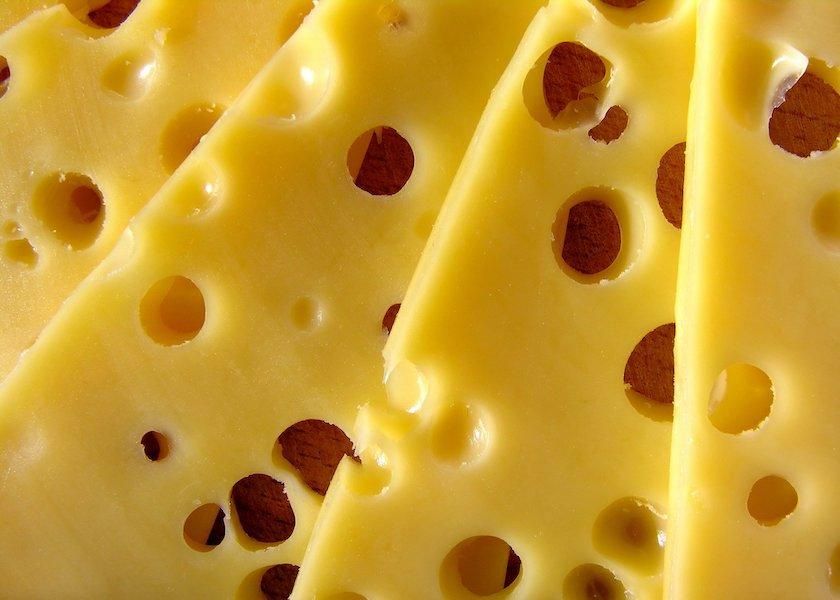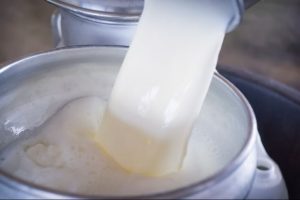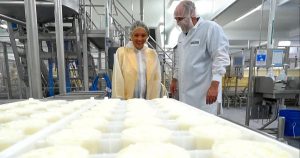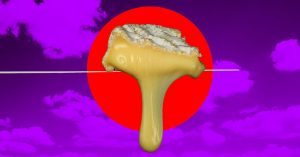
The July federal order Class III benchmark milk price hit bottom, falling to $13.77 per hundredweight (cwt.), down $1.14 from June, $8.75 below July 2022, and the lowest since May 2020. The seven-month average stands at $16.95, down from $22.89 at this time a year ago, and compares to $16.90 in 2021.
Late Friday morning Class III futures portended an August price at $17.24, September at $17.53, October at $17.54, November at $18.21 and December at $18.30.
The Class IV price is $18.26, unchanged from June but $7.53 below a year ago. Its average stands at $18.55, down from $24.83 a year ago, and compares to $15.01 in 2021.
Just as the U.S. credit standing was reduced this week from AAA to AA plus, dairy finances aren’t looking any better either. Corn, soybean and alfalfa hay prices were down in June but so was the all milk price. The Ag Prices report shows the milk feed ratio at 1.36, down from 1.42 in April, and 1.92 June 2022. It was the sixth consecutive decline and the lowest since July 2012’s 1.33.
The all milk price average was down for the eighth consecutive month, dropping to $17.90 per cwt., down $1.40 from May, and $8.80 below June 2022.
The national corn price averaged $6.49 per bushel, down a nickel from May and 89 cents per bushel below June 2022. Soybeans averaged $14.20 per bushel, down 20 cents from May and $2.20 per bushel below a year ago. Alfalfa dropped to $263 per ton, down $16 from May but still $18 per ton above a year ago.
The June cull price for beef and dairy combined climbed to an average $107 per cwt., up $4.00 from May, $16.80 above June 2022, and $35.40 above the 2011 base average.
Quarterly milk cow replacements averaged $1,760 per head in July, up $40 from April and $50 above July 2022. Cows averaged $1665 per head in California, up $10 from April, but $85 below a year ago. Wisconsin’s average, at $1,910 per head, was up $70 from April and $40 above July 2022.
Income over feed costs in June were below the $8 per cwt. level needed for steady to higher milk production for the fifth month in a row, according to dairy economist Bill Brooks, of Stoneheart Consulting in Dearborn, Missouri. Brooks says “Input prices were lower, but all three commodities were in the top five for June all time. Feed costs were the second highest ever for the month of June and the sixteenth highest of all time.”
Milk income over feed costs for 2023 (using July 28 CME settling futures prices for Class III milk, corn, and soybeans plus the Stoneheart forecast for alfalfa hay) are expected to be $7.82 per cwt., a gain of 61 cents per cwt. versus last month’s estimate. 2023 income over feed would be below the level needed to maintain or grow milk production, and down $4.17 per cwt. from 2022’s level, says Brooks.
Milk income over feed in 2024 is expected to be $10.86 per cwt., a gain of 97 cents per cwt. versus the 2023 estimate. Income over feed in 2024 would be above the level needed to maintain or grow milk production, according to Brooks.
He adds that “The current decline in profitability has not negatively impacted milk cow prices and the improved outlook is lending support, as milk cow prices increased after holding steady in April.”
Meanwhile, the June Dairy Margin Coverage (DMC) margin dropped $1.18 per cwt. from a month earlier to $3.65, first time it’s been below $4 per cwt since margin protection became the basic federal safety net mechanism for dairy in 2014, according to the National Milk Producers Federation.
“It will generate a lot of 35 cent per cwt. payments for Tier 2 coverage at the free $4 per cwt. coverage level, as well as payments of $5.85 per cwt. for coverage at the maximum $9.50 Tier 1 coverage level,” says NMPF. Forecasts indicate the margin will improve slightly in July from the June level, then increase rapidly from August through October and approach $9.50 per cwt. by December.
Dairy margins did improve the second half of July as a continued recovery in milk prices more than offset a slight increase in projected feed costs, according to the latest Margin Watch (MW) from Chicago-based Commodity and Ingredient Hedging LLC. The MW cited the sharp gains in cheese which helped support Class III futures while gains butter were supportive to Class IV futures.
“USDA’s semi-annual Cattle Report estimated the total U.S. supply of dairy heifers as of July 1 at 3.65 million head,” according to the MW, “down100,000 or 3% below a year ago. The dairy heifer count has dropped for seven consecutive years as dairy producers have been economically incentivized to introduce beef genetics into their breeding programs. The growing trend of beef-dairy crosses continues to reduce the number of dairy heifers, and combined with increasing cull rates, will slow the pace of expansion in the next cycle. Recent rainfall and beneficial forecasts moving into early August have taken risk premium out of the feed markets following a spike in the first half of the month,” the MW concluded.
This week’s Crop Progress report shows 84% of U.S. corn was silking, as of the week ending July 30, up from 68% the previous week, 7% ahead of a year ago, and 2% ahead of the five-year average. 29% was in the dough stage, 5% ahead of a year ago. 55% was rated good to excellent, down 2% from the previous week, and down from 61% a year ago.
The report shows 83% of the soybeans blooming, up from 70% the previous week, 6% ahead of a year ago, and 5% ahead of the average. 50% were setting pods, up from 35% the previous week and 9% ahead of a year ago. 52% were rated good to excellent, down 2% from the previous week and 8% behind a year ago.
HighGround Dairy (HGD) says “Over half the corn and soybean crop is in drought conditions. Parts of Kansas, Nebraska, Wisconsin and Texas were categorized in extreme and exceptional droughts, making these some of the hardest hit in the U.S. On the other hand, flooding in the Eastern U.S. has damaged crops, mainly in Vermont and Kentucky.”
The week ending July 22 saw 61,200 dairy cows go to slaughter, up 1,600 head from the previous week, and 3,700 or 6.4% more than a year ago. Year to date 1,792,100 cows have been culled, up 97,200 head or 5.7% from a year ago.
CME cheese prices may have shot up too fast and too high. Block cheddar closed the first Friday of August at $1.9650 per pound, up 5.75 cents on the week, up 63 cents in five weeks, highest since March 28, and 18 cents above a year ago.
The barrels jumped almost 11 cents Monday, hitting $1.87, highest since March 30, but fell back Thursday and Friday, closing at $1.7750, up 1.25 cents on the week, 1.75 cents below a year ago, and 19 cents below the blocks.
Sales totaled two cars of block for the week and 61 for the month of July, down from 122 in June. Barrel sales totaled seven for the week and 169 for the month of July, down from 106 in June.
Midwestern cheesemakers say cheese continues to move steadily though some fear rising prices may slow that. Milk prices were still below Class by $2 or thereabouts, stark contrast from mid-July when they were at $10 and $11 under.
Western cheese demand is strong to steady, though sources indicate a healthier demand for block cheese. Sentiments of decreasing milk output and equipment maintenance contributing to bullish market prices was noted. Demand for Class III milk is strong but there is enough to run strong to steady cheese production.
Cash butter ended seven consecutive gains and fell to a $2.62 per pound close, losing six cents on the week and 39 cents below a year ago when it topped $3. The week saw 33 loads of butter sold and 150 for July, up from just 67 in June.
Butter has tightened significantly in the Central region, says DMN. Brokers say their focus has shifted west for any extra supply. Midwest cream is tight and churning is expected to continue, but locating cream at or below the 1.30 multiple has become a “fruitless endeavor.” That said, cream availability reached further into the summer months than many expected, with milder summer temperatures at least in the evenings and early mornings in the upper Midwest. Not so for Southern Central contacts where cream access quickly tightened.
Cream is more available in northern parts of the West compared to southern parts, but northern cream is tightening. Declines in milk components are more pronounced in the southern parts. Butter production is strong and demand is strong to steady. Export demand is light aside from interest from Canadian purchasers, but U.S. prices are not competitive globally.
Wounded by Tuesday’s GDT spot Grade A nonfat dry milk fell back to $1.12 per pound Thursday but closed Friday at $1.1250, 3.50 cents lower on the week and 37.75 cents below a year ago. There were 22 sales on the week and 41 for July, down from 49 in June.
Dry whey closed Friday at 27.25 cents per pound, up 2.25 cents on the week but 16.25 cents below a year ago. Sales totaled 7 loads for the week and 152 for the month of July, down from 218 in June.
The July 28 Daily Dairy Report (DDR) had bad news for U.S. whey exports. The DDR stated “African swine fever (ASF) continues to spread in parts of Southeast Asia. The virus has largely run its course in China, home to more than half the world’s pigs, but the United Nation’s Food and Agriculture Organization reported several new outbreaks this month in the Philippines, Indonesia, and Vietnam.”
China reported its first outbreak in August 2018, according to the DDR, and by 2019, Chinese lactose imports plummeted 20.8% year over year and whey imports dropped 18.6%, according to Trade Data Monitor. Lactose and whey have been important sources of carbohydrates and protein, respectively, for piglets, the DDR said, and by 2020, the Chinese hog herd had shrunk 30%. The swine industries in Southeast Asia have yet to fully recover from the earlier ASF setbacks, according to the DDR, International dairy trade remains depressed.
Tuesday’s Global Dairy Trade auction saw the weighted average drop 4.3%, following the 1.0% decline on July 18, and the 3.3% fall on July 4. Traders brought 71.9 million pounds of product to market, up from 57.2 million on July 18, and the most since Jan.3, 2023. The average metric ton price fell to $3,100 U.S., down from $3,289 on July 18.
Whole milk powder led the declines, dropping 8.0% after slipping 1.5% on July 18. Skim milk powder was down 1.4%, following a 0.6% slip. Cheddar was also down 1.4%, after a 10.1% dive on July 18. Butter was off 0.7%, after falling 2.7%, and anhydrous milkfat was down 0.5% after gaining 3.4% last time. Buttermilk powder showed the only gain, up 9.9%. It did not trade last time.
StoneX says the GDT 80% butterfat butter price equates to $2.0709 per pound U.S., down 1.1 cent from the July 18 event, and compares to CME butter which closed Friday at a pricy $2.62. GDT Cheddar, at $1.7735, was down 2.1 cents after losing 19.5 cents last time and compares to Friday’s CME block cheddar at $1.9650. GDT skim milk powder averaged $1.1130 per pound, down from $1.1353. Whole milk powder averaged $1.2993 per pound, down from $1.4060, a loss of 10.7 cents. CME Grade A nonfat dry milk closed Friday at $1.1250 per pound.
Analyst Dustin Winston says “The market share of SE Asia fell below the North Asia market share for the first time in two months. North Asia volume bounced back in a big way this auction, nearly doubling from the last event and up from last year. SE Asia volume on the other hand fell from both last year and last event. Alongside North Asia, the Middle East and South/Central America both increased from last year and last event.”
August GDT auctions have consistently shown a negative trend since 2017, says HGD and the overall winning price settled at its lowest level in almost three years. HGD anticipated weaker prices due to persistently bearish demand signals, most notably from China. Despite the fact that ‘boots on the ground’ chatter continues to reiterate a quiet Chinese market, the region’s market share did increase, surpassing volumes procured from the region at this time last year, as well as the prior event.”
HGD adds that Fonterra has reduced its 2023/24 season forecast Farmgate Milk Price range from $7.25 to $8.75 per kilograms of milk solids, with a midpoint of $8.00, to $6.25-$7.75 per kgMS, with a midpoint of $7.00. Fonterra CEO Miles Hurrell says “The revised forecast reflects ongoing reduced import demand for whole milk powder from Greater China.”
Lucas Fuess, Rabo Bank Senior Dairy Analyst, reported in the August 7 Dairy Radio Now broadcast that the August 1 GDT saw one of the lowest demand readings ever seen for whole milk powder and pointed to Fonterra offering increasing volumes as milk production ramps up in New Zealand at this time of year. He blamed slow demand in many parts of the world, including China, but also buyers anticipating higher availability in the next few months.
The situation points to continued low prices, he warned. China still takes a significant share of the purchases but not enough to drive prices higher. It’s also a contrast to the rising prices we’re seeing in the U.S., particularly on cheese and butter as concerns rise over falling milk output and herd size. Fuess warned however that we may not be out of the woods of low prices just yet.
Cooperatives Working Together member cooperatives accepted 11 offers of export assistance this week that helped capture sales of 93,000 pounds of American type cheese and 454,000 pounds of cream cheese. The product is going to customers in Oceania and Asia and will be delivered through October.
CWT’s 2023 exports now total 27.6 million pounds of American-type cheeses, 809,000 pounds of butter, 24,000 pounds of anhydrous milkfat, 31.4 million pounds of whole milk powder and 5.9 million pounds of cream cheese. The products are going to 24 countries and the equivalent of 548.9 million pounds of milk on a milkfat basis.
Lee Mielke is a graduate of Brown Institute in Minneapolis, Minnesota. He’s formerly the voice of the radio show “DairyLine,” and his column appears in agricultural papers across the U.S. Contact him at lkmielke@juno.com.
























